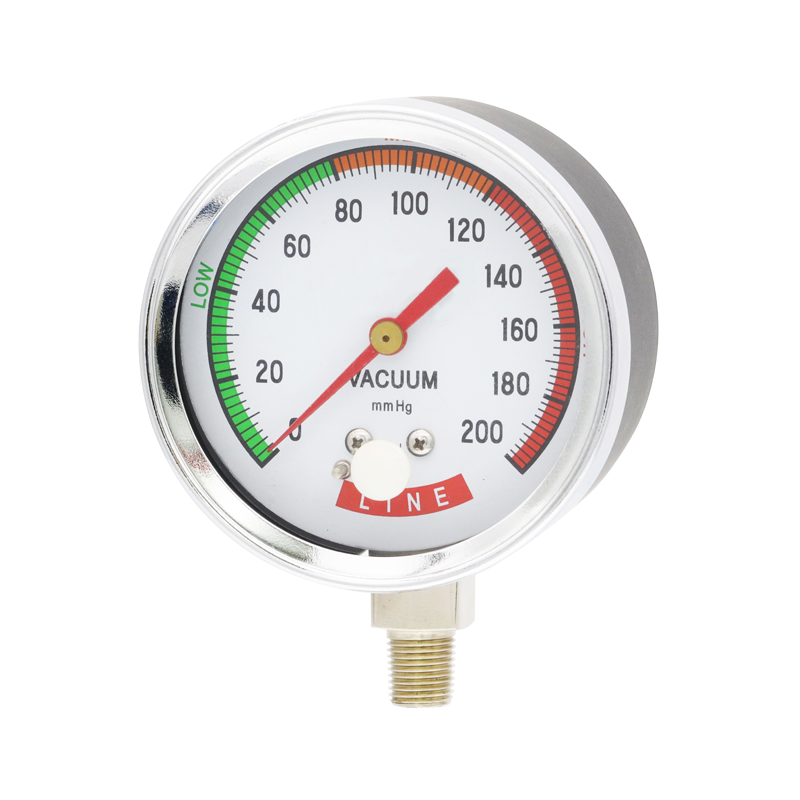
Nov . 29, 2024 14:10 Back to list
JAH Low Pressure Diaphragm Gauges for Accurate Measurement and Industrial Applications
Understanding Low Pressure Diaphragm Pressure Gauges
In various industrial applications, accurately measuring pressure is crucial for ensuring optimal performance and safety. Among the different types of pressure measuring devices, low pressure diaphragm pressure gauges stand out for their precision and reliability in low pressure conditions. In this article, we will explore the working principles, applications, advantages, and maintenance of low pressure diaphragm pressure gauges.
What is a Diaphragm Pressure Gauge?
A diaphragm pressure gauge is a type of mechanical pressure measuring instrument that uses a flexible diaphragm to sense pressure. The diaphragm is usually made of elastic materials like stainless steel or brass, designed to deform when subjected to pressure changes. As the pressure fluctuates, the diaphragm flexes, causing a connected mechanical system (usually a pointer or dial) to indicate these changes on a calibrated scale.
Working Principle
The primary operating mechanism of a diaphragm pressure gauge is relatively straightforward. The gauge contains a sealed chamber that accommodates the diaphragm. When pressure is applied to one side of the diaphragm, it deflects, causing movement in a connected mechanical linkage. This movement translates into a readable measurement on the gauge face.
Low pressure diaphragm gauges are specifically designed to measure pressures usually below 15 psi (pounds per square inch). They operate based on the principle that the deformation of the diaphragm correlates directly with the amount of pressure applied, allowing for precise readings even in delicate applications where high sensitivity is crucial.
Applications
Low pressure diaphragm pressure gauges find utility in various industries and sectors. Key applications include
1. HVAC Systems In heating, ventilation, and air conditioning systems, these gauges monitor the pressure of gases and air, ensuring efficient operation and preventing system failures.
2. Pharmaceutical and Food Industries In these sectors, pressure measurements are vital for maintaining safety and quality standards. Low pressure gauges help monitor processes that require precise pressure control.
3. Laboratories Researchers and scientists utilize low pressure gauges in experiments where gas or liquid pressure must be measured accurately to guarantee valid and reproducible results.
4. Hydraulic Systems Ensuring the proper functioning of hydraulic systems requires monitoring fluid pressure, and low pressure diaphragm gauges serve this purpose effectively.
5. Environmental Monitoring These gauges can also be found in applications involving pneumatic systems, atmospheric pressure measurements, or gas detection, allowing for the monitoring of environmental parameters.
jah low pressure diaphragm pressure gauges

Advantages
Low pressure diaphragm pressure gauges offer several advantages
1. Precision They provide high accuracy and repeatability, which is essential for applications that require consistent pressure measurements.
2. Simple Design The diaphragm mechanism is straightforward, making these gauges easy to maintain and repair.
3. Durability Constructed from robust materials, low pressure diaphragm gauges can withstand harsh environments and resist corrosion, extending their lifespan.
4. Versatility They can be used for a wide range of gases and liquids, making them suitable for diverse applications across different industries.
5. Low Cost Compared to other pressure measuring devices, diaphragm gauges are usually more affordable while still delivering reliable results.
Maintenance
To ensure the longevity and accuracy of low pressure diaphragm pressure gauges, regular maintenance is essential. Here are some tips
1. Calibration Periodic calibration should be performed to ensure the gauge provides accurate readings. This is especially crucial in applications where precise measurements are critical.
2. Inspection Regularly inspect the gauge for any signs of damage, wear, or corrosion. This includes checking the diaphragm for cracks or leaks.
3. Cleaning Keep the gauge clean and free from debris that may interfere with its operation.
4. Proper Installation Ensure that the gauge is installed correctly to prevent any mechanical stress that could lead to inaccurate readings or damage.
In conclusion, low pressure diaphragm pressure gauges are invaluable tools across various industries. Their accuracy, durability, and simplicity make them an ideal choice for measuring low pressures in diverse applications. By understanding their principles of operation and adhering to maintenance best practices, users can ensure reliable performance and long service life from these essential instruments.
-
High-Precision Mass Diaphragm Pressure Gauge - Reliable & Durable Solutions
NewsJun.10,2025
-
Explain Diaphragm Pressure Gauge Expert Guide, Top Manufacturers & Quotes
NewsJun.10,2025
-
Affordable Differential Pressure Gauge Prices in China Top Manufacturers
NewsJun.10,2025
-
Reliable Water Fire Extinguisher Pressure Gauges for Safety
NewsJun.10,2025
-
Durable Diaphragm Protection Pressure Gauges Get Quote
NewsJun.09,2025
-
WIKA Differential Pressure Gauge with Switch Reliable Monitoring & Control
NewsJun.09,2025
